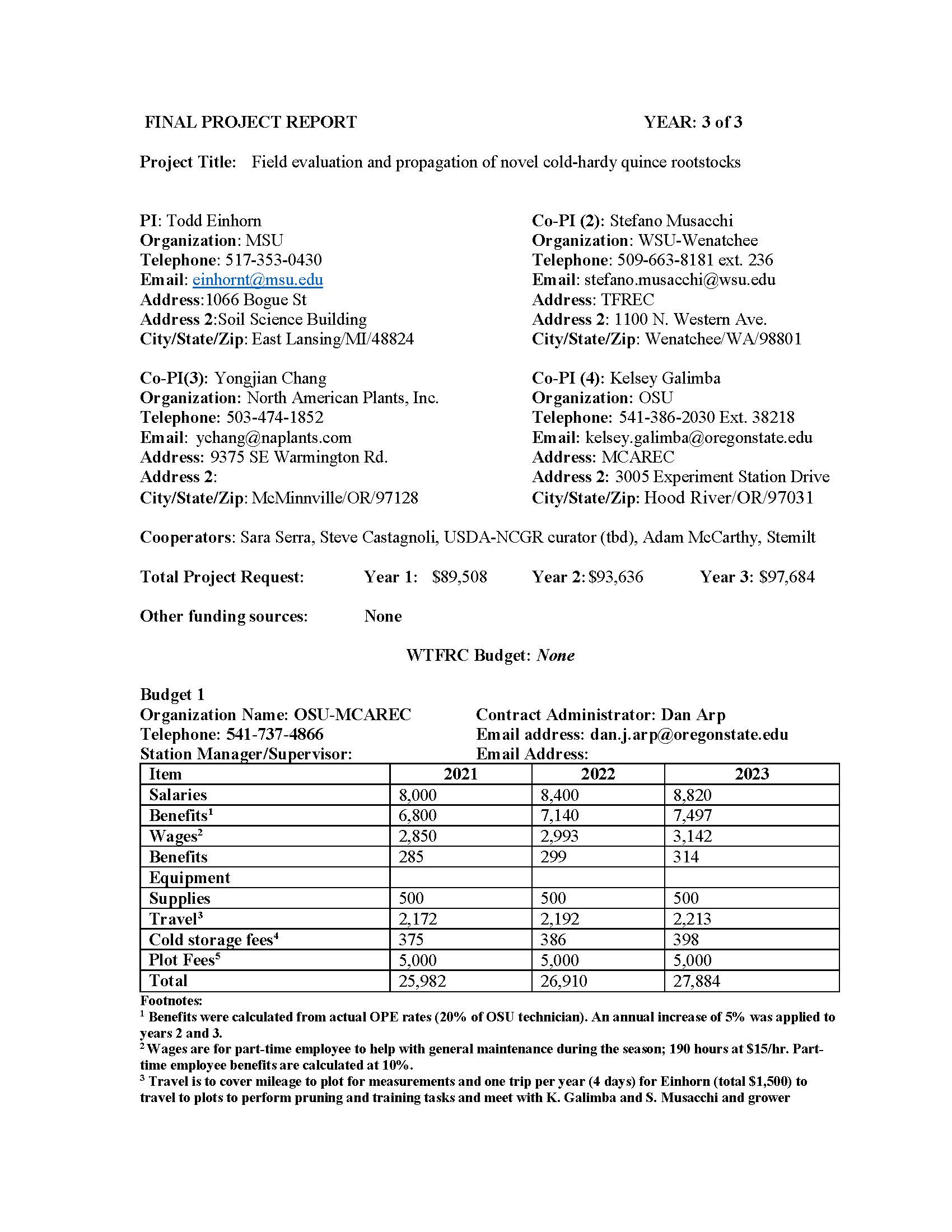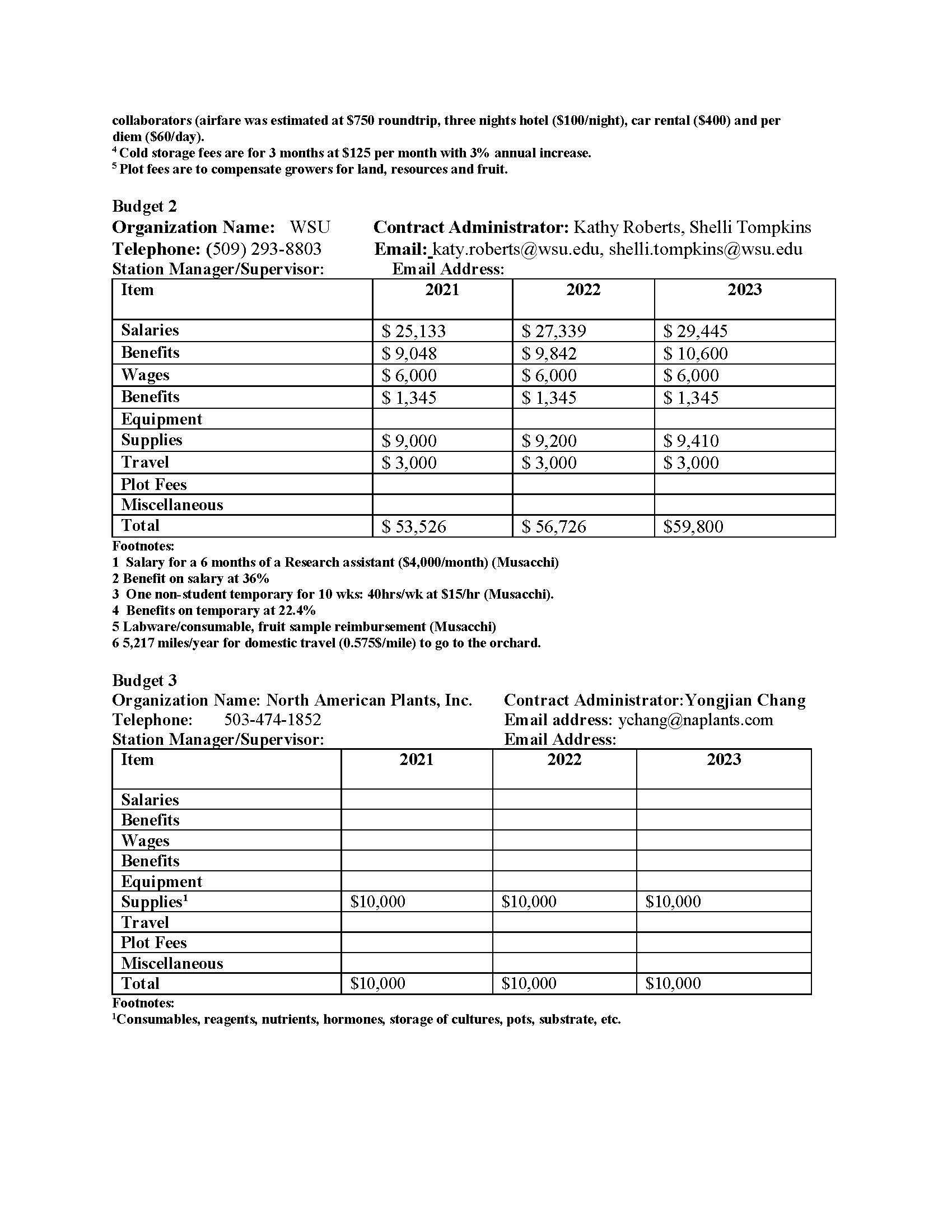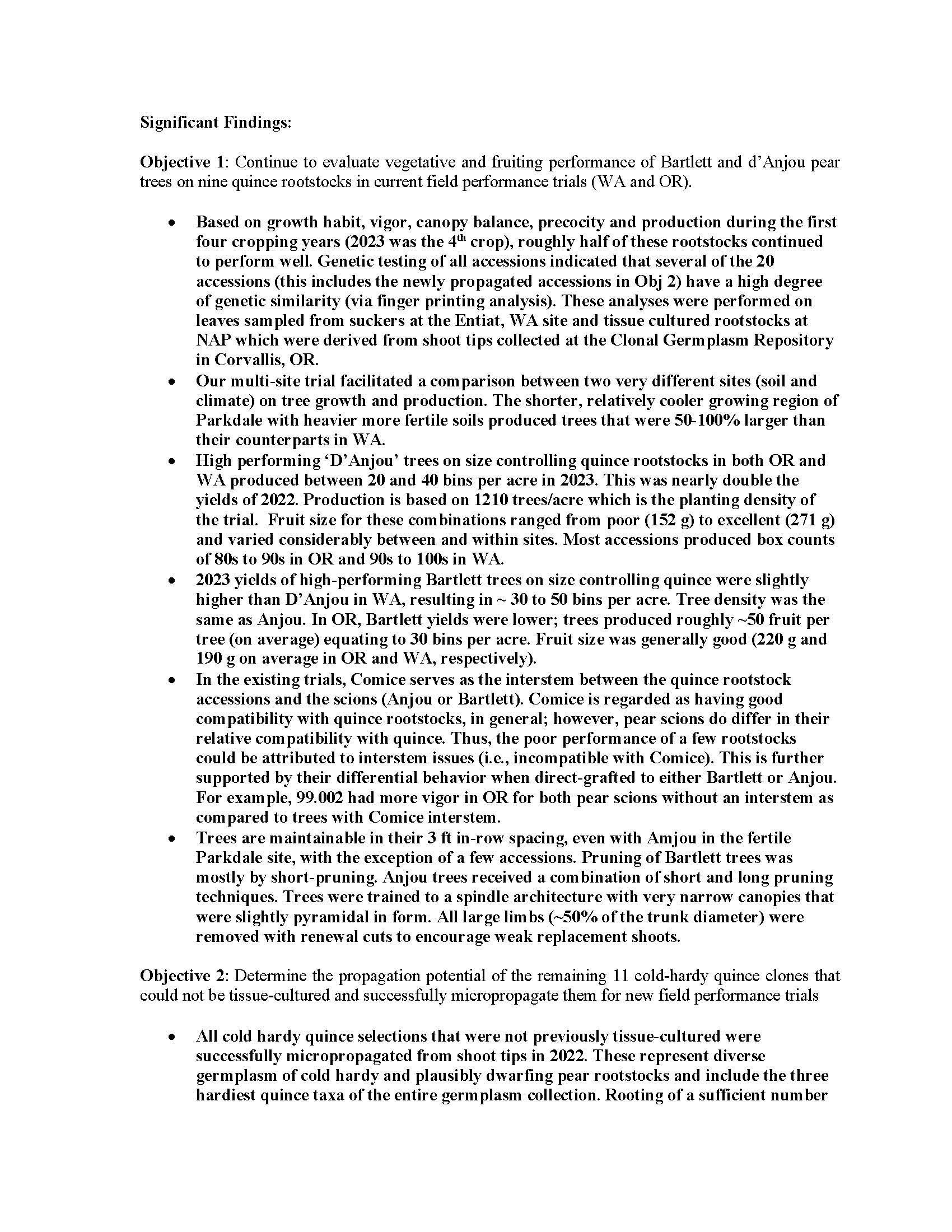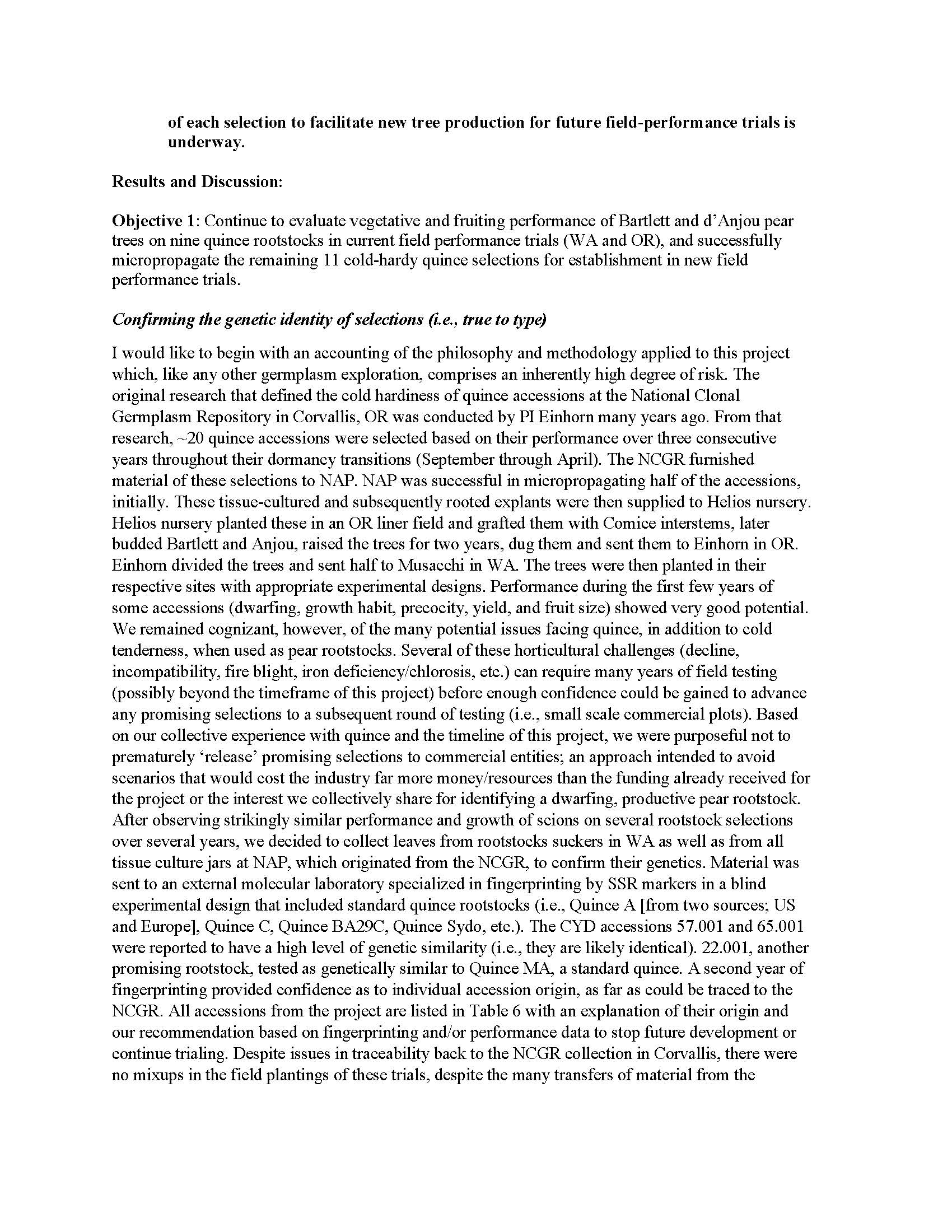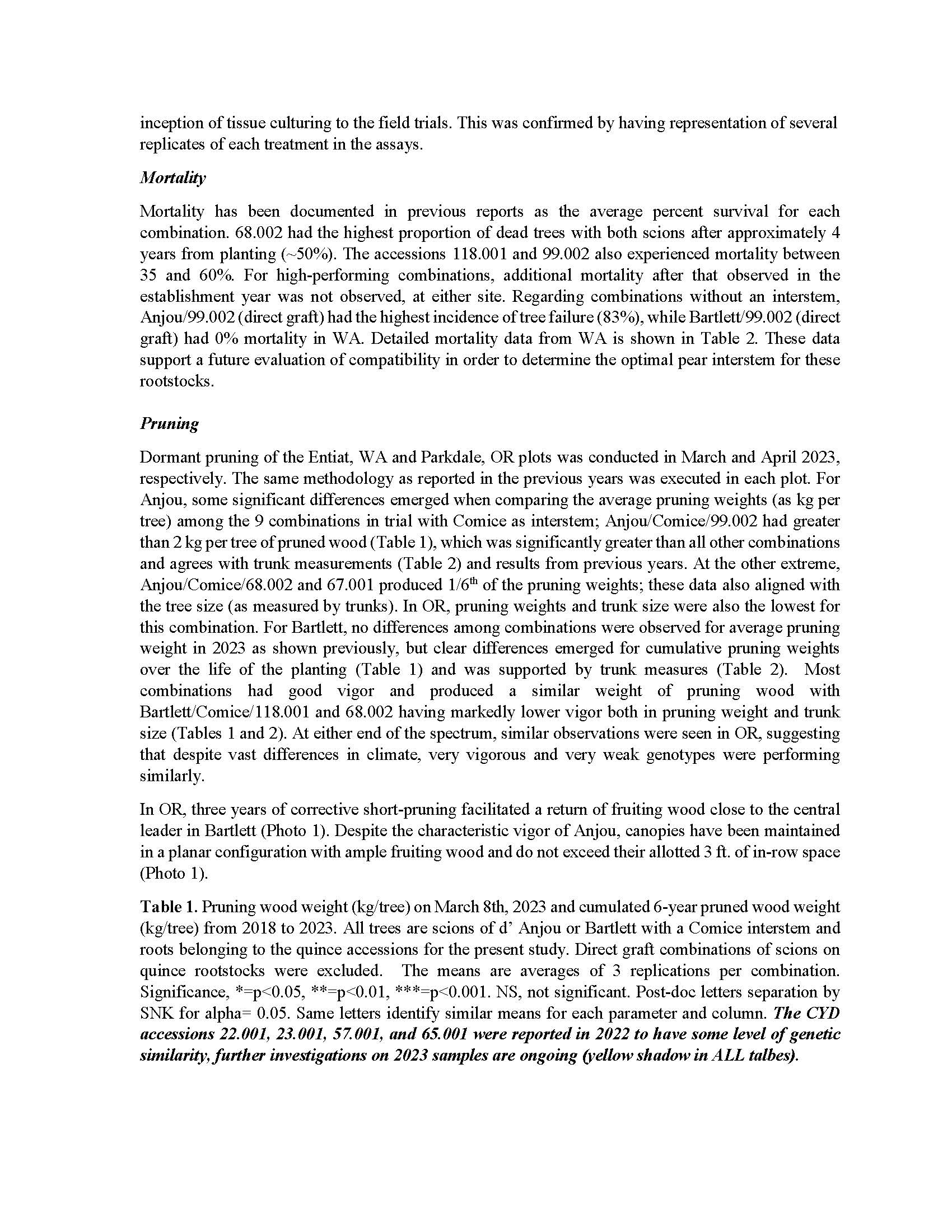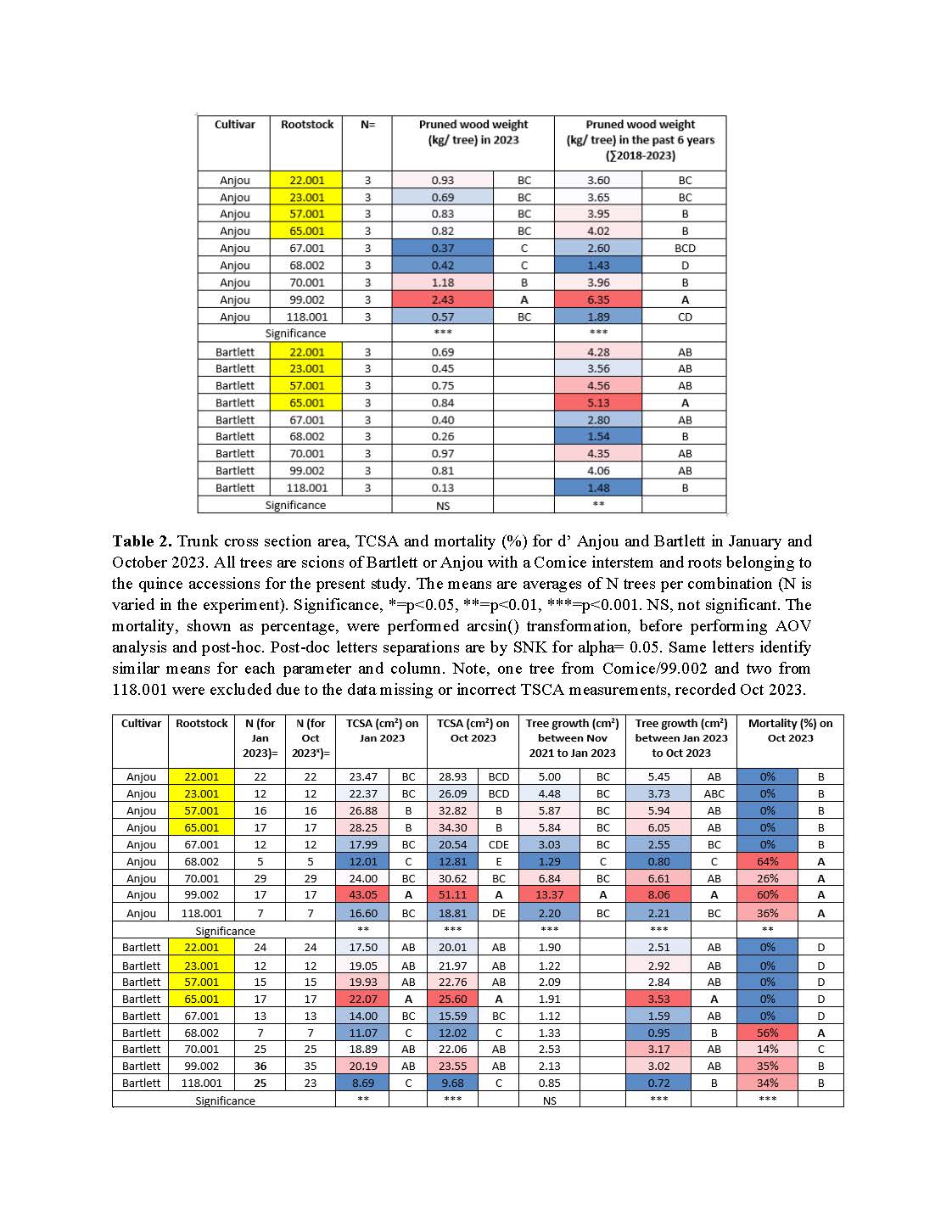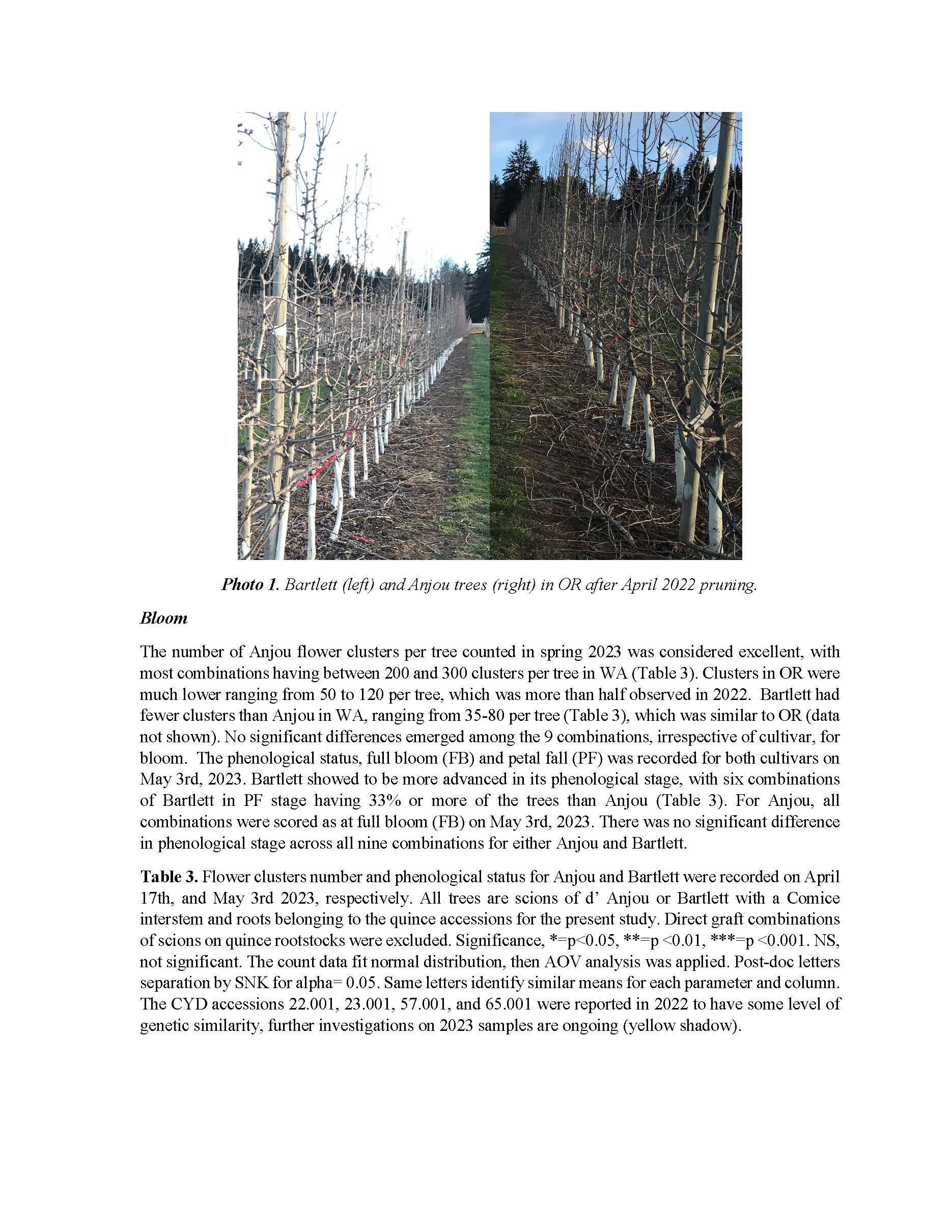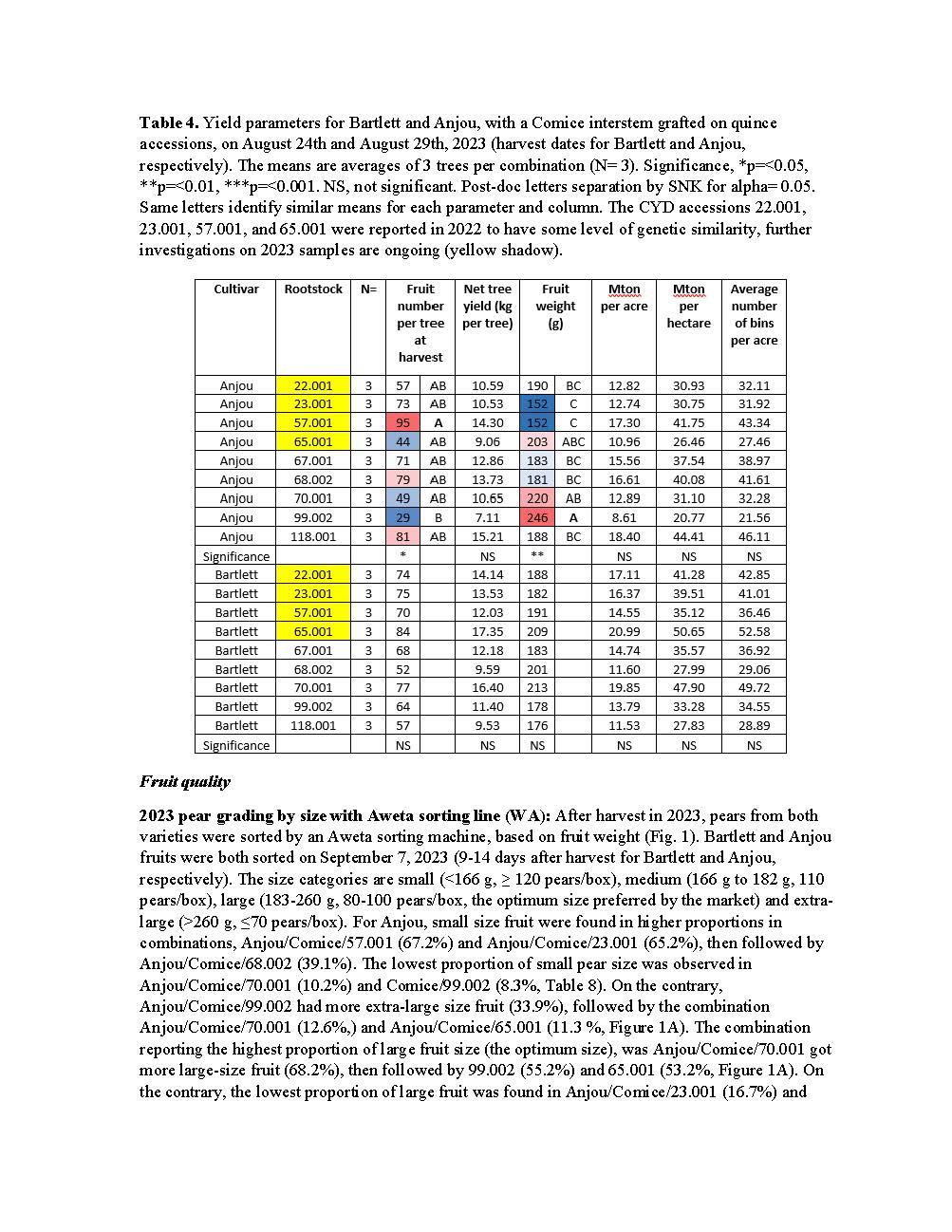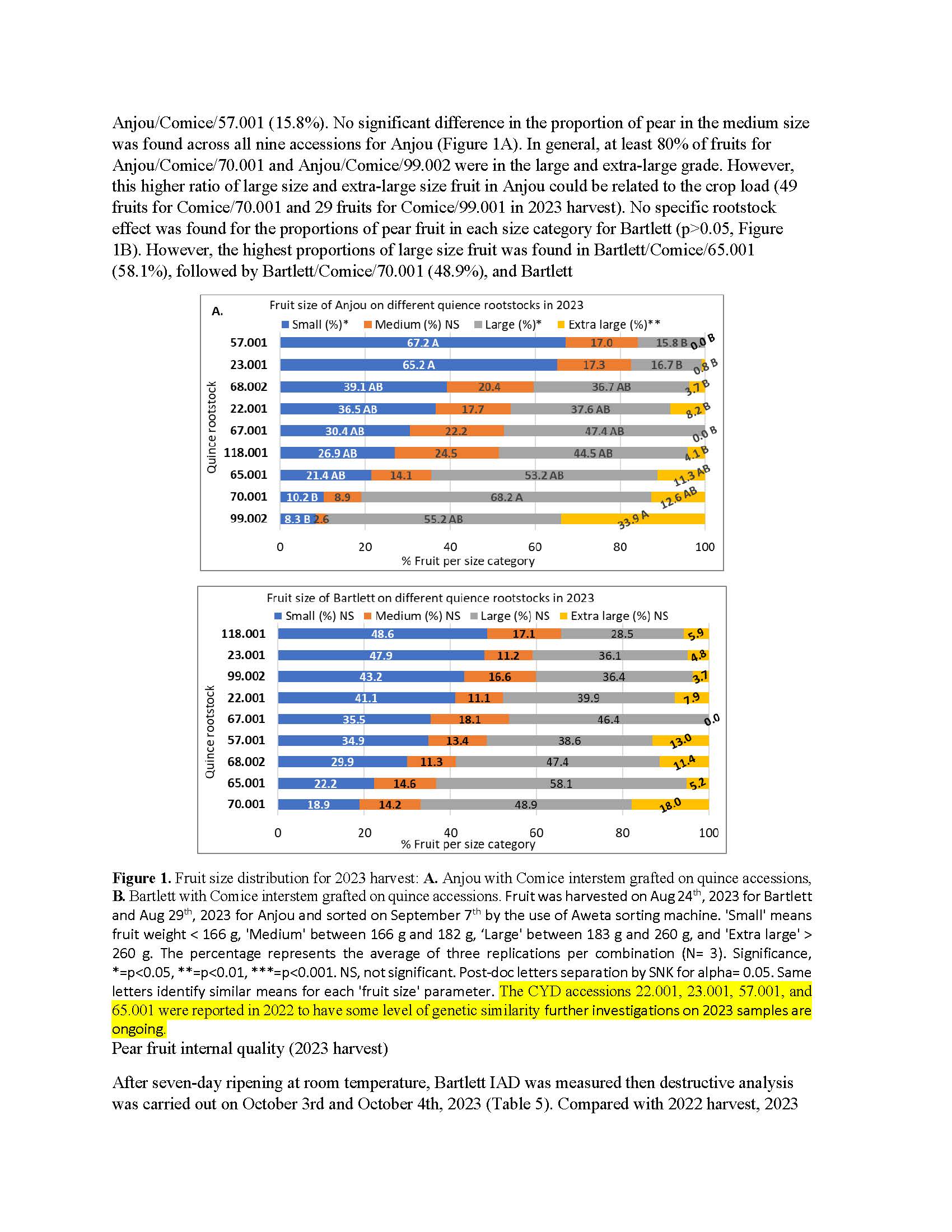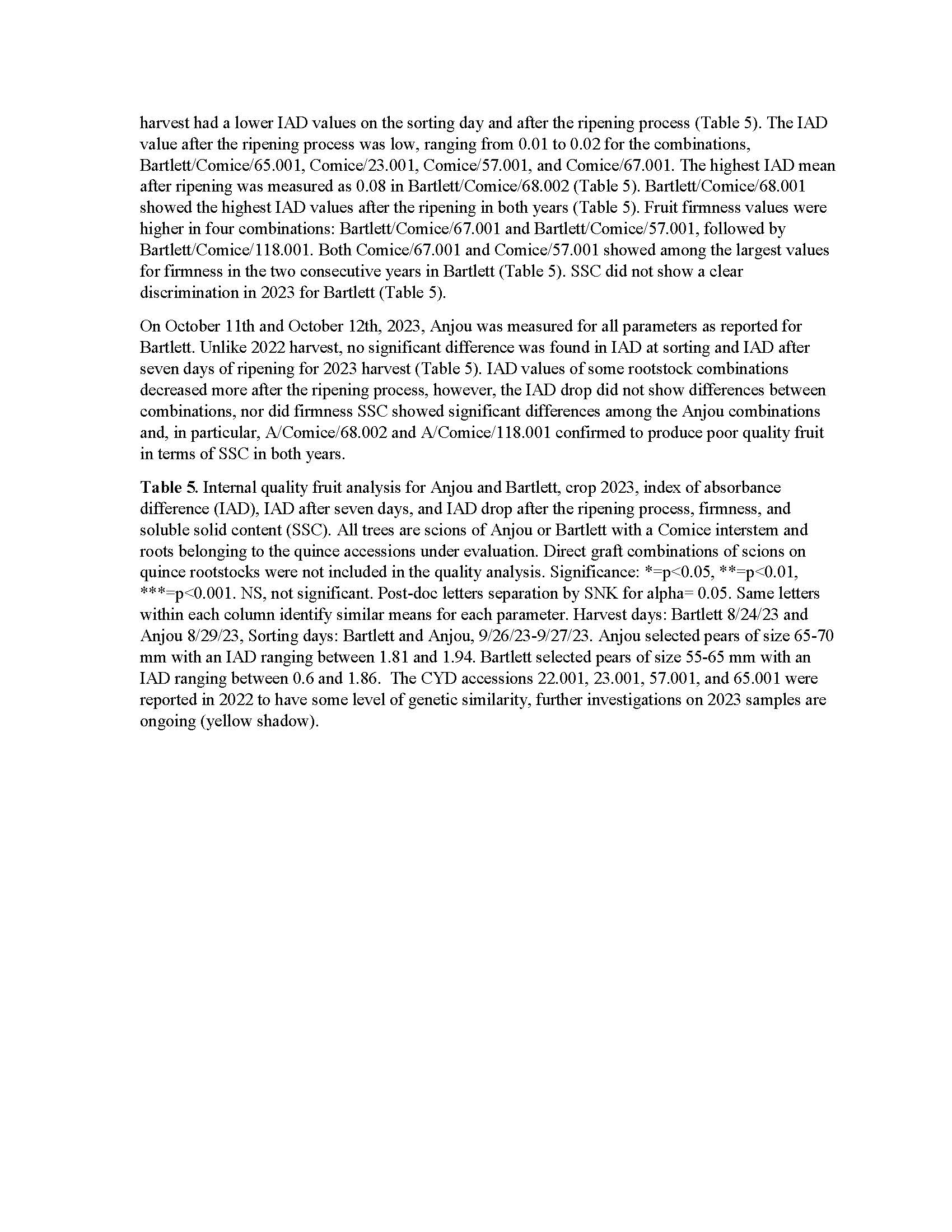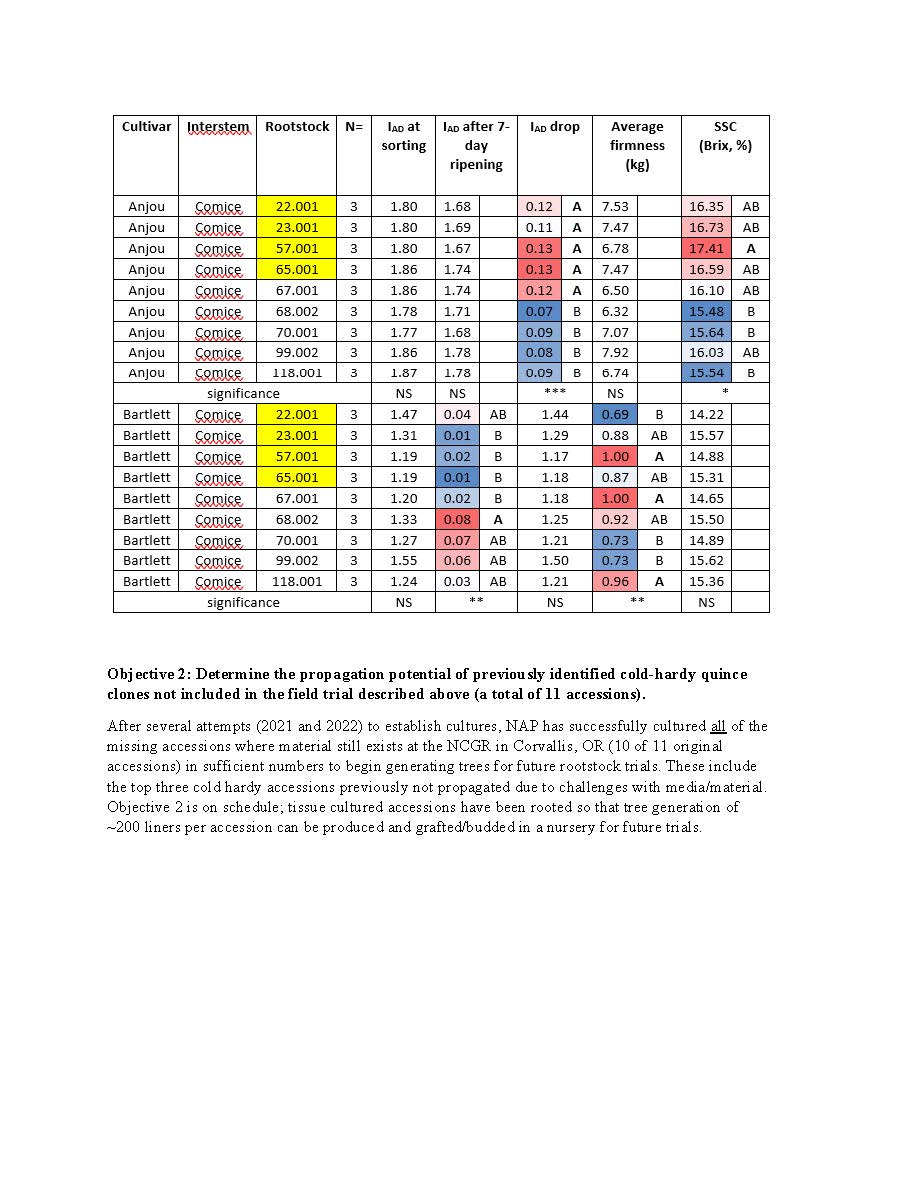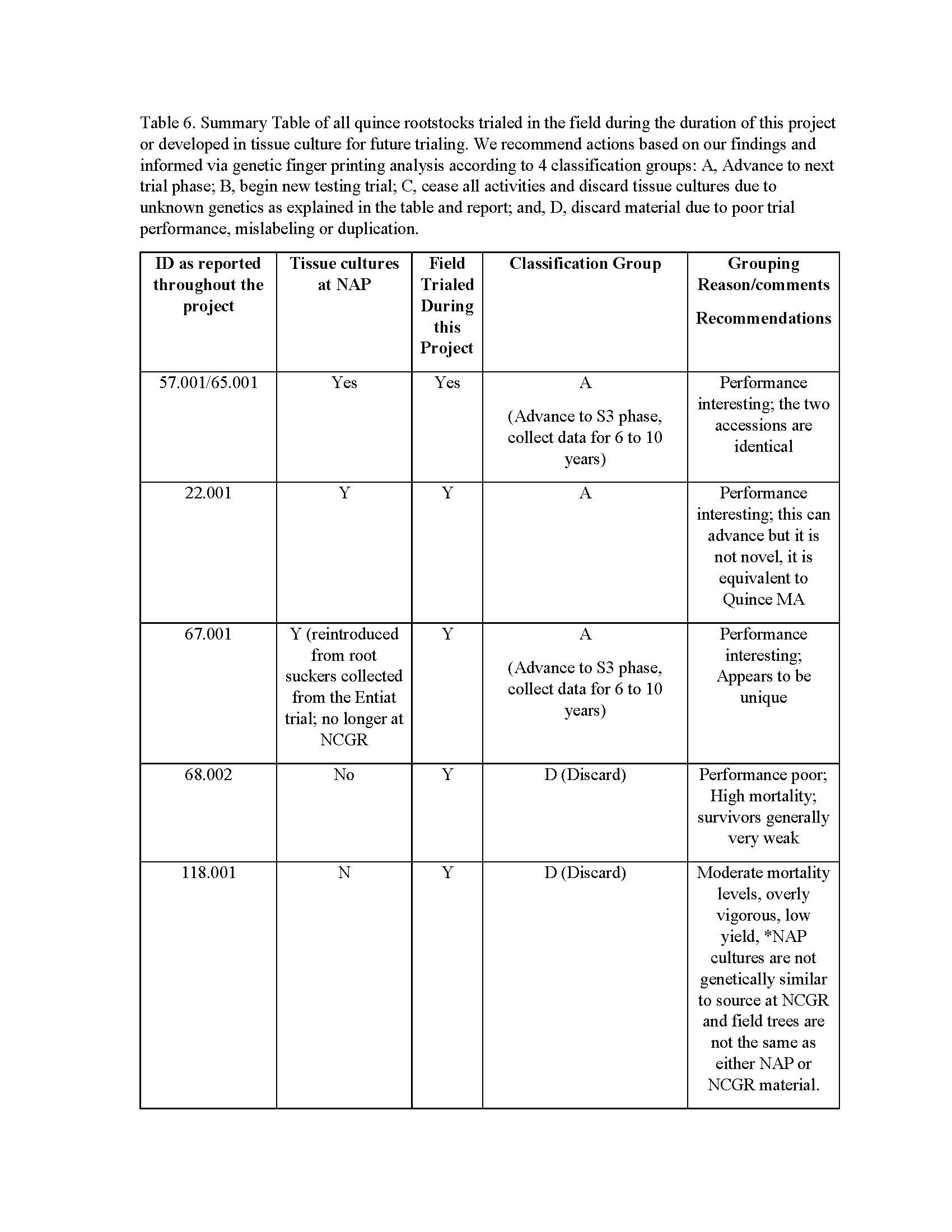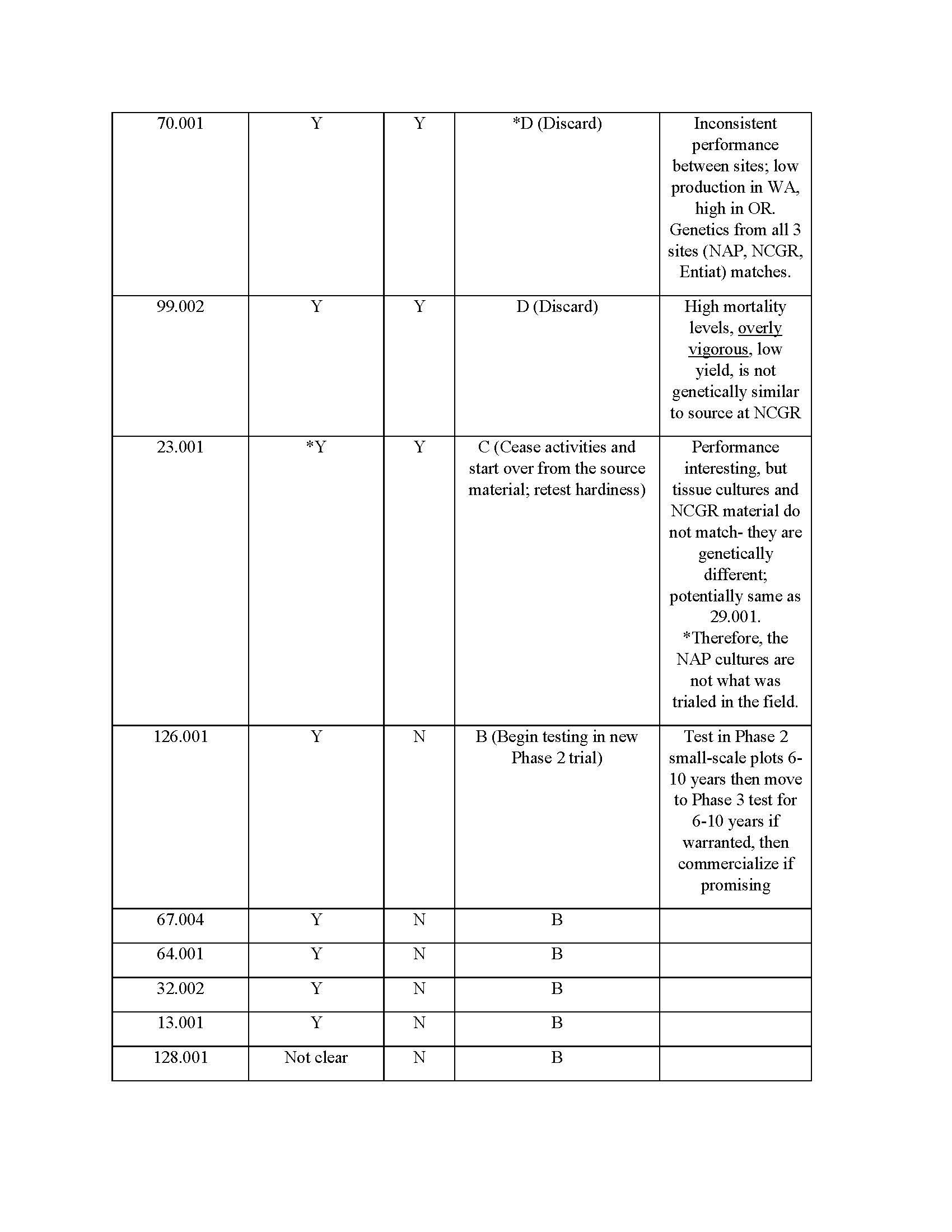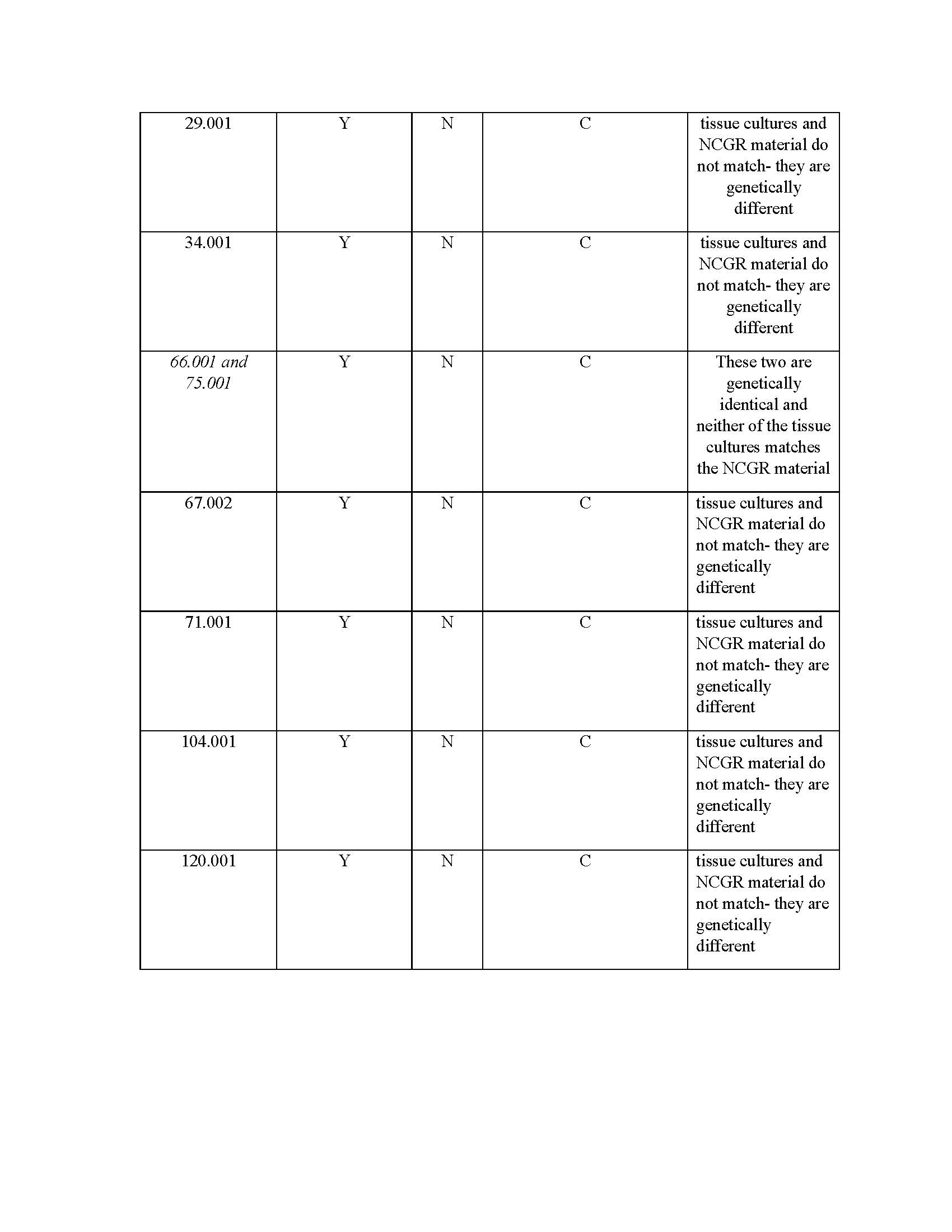Field evaluation and propagation of novel cold-hardy quince rootstocks
Author: Todd Einhorn
Published: 2025
Summary: A three-year evaluation comprising three cropping seasons (4th through 6th leaf) evaluated the agronomic performance of 9 cold-hardy quince rootstocks with ‘d’Anjou’ and ‘Bartlett’ scions and ‘Comice’ insterstem at two sites, Parkdale OR and Entiat WA. Four of these rootstocks produced dwarf trees with good vigor to fruit balance and were horticulturally managed within a three foot in-row spacing after 7 years in the field. These accessions produced between 20-50 bins of fruit per year, depending upon year, site, cultivar and rootstock accession, and had relatively low mortality. In general, trees in OR were ~50% larger than in WA for any given accession. Poorly performing rootstocks behaved similarly between sites. In addition to these field trials, previously selected cold hardy quince accessions that were not previously tissue-cultured were successfully micropropagated from shoot tips in 2022 and 2023. An exhaustive, two-year genetic fingerprinting analysis was undertaken to confirm the identity of the rootstock accessions tested and propagated within this proposal to ensure that each accession was true to type and could be traced back to its original progenitor tree at the NCGR. For each of the nine field-tested accessions, material was collected from several replicate trees of a given rootstock at the Entiat WA field trial site (via sucker material), NAP (from tissue culture jars) and NCGR (from the original tree). In some cases, the original tree no longer exists. For the additional 15 accessions tissue-cultured during the project timeline, but not yet field tested, material was selected at NAP (from tissue culture jars) and the NCGR (from the original tree). Analyses revealed two or more accessions to be genetically similar (i.e., duplicates) and several accessions to have genetic dissimilarity between/among locations (e.g., Entiat, WA, NAP and/or the NCGR), precluding our ability to identify them and link the present material to the original cold hardiness status. Based on these data, we can recommend how each of the 25 rootstock accessions should be handled to avoid severe economic consequences that will inevitably arise if the industry propagates, trials and/or commercializes material of unconfirmed origin. First, the nine accessions field tested for 6 years, including 3 years of cropping: 1) Discard five accessions (57.001 or 65.001 [these are the same], 68.002, 118.001, 99.002, 70.001) due to the duplication, poor vegetative and/or yield performance, high mortality, and/or mislabeling; 2) re-evaluate the cold hardiness of one accession (23.001) for which no root suckers could be sampled and material at NAP and NCGR differed from one another (making it impossible to determine if the trees in field trials are the same as the original material evaluated for its cold hardiness); and, 3) advance three accessions (57.001 or 65.001 [these are the same], 22.001 and 67.001) to a Phase 3 trial. Phase 3 trialing should comprise an additional 6-10 years of small-scale commercial plot testing. Rootstocks deemed promising upon completion of phase 3 trialing, based on tree health, cropping, canopy balance, and fruit quality could be candidates for potential commercialization. Between 200 and 600 rooted plants were tissue cultured for each accession during the timeline of the project to facilitate Phase 3 trialing. For the 15 rootstocks accessions previously selected for their cold hardiness, 14 were successfully established in tissue culture. Our recommendation for the handling of these rootstocks is as follows: 1) the genetic identity of six accessions was confirmed (13.001, 32.002, 64.001, 67.004, 126.001, 128.001). These were rooted and are ready for grafting (100-500 plants depending on the accession) using interstems and scions to assess their performance in field trials, a minimum of 6 years and preferably 8-10 to include five cropping cycles. Rootstocks that performed well following the completion of these trials could be advanced to a phase 3 trial (as described above). The remaining eight accessions (29.001, 34.001, 66.001 and 75.001 [these are the same], 67.002, 71.001, 104.001, and 120.001) were not genetically similar to the mother tree at NCGR. Thus, we recommend discarding the tissue cultures and reanalyzing the cold hardiness of the original NCGR tree to compare with early hardiness data. Those that are hardy can be cultured and rooted for future field trials.
Keywords:

